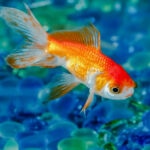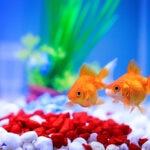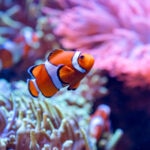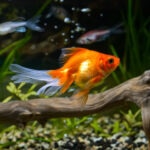What Sea Slugs Are Right For Your Reef Tank?
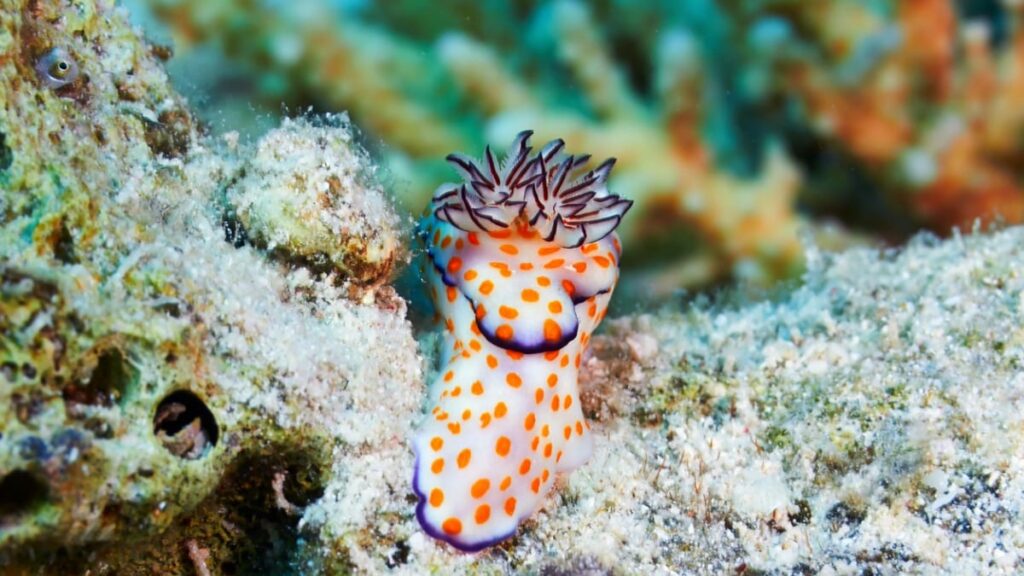
Photo by iStock.com/sserg_dibrova
Sea slugs are well-known to divers and underwater photographers, but are less familiar to aquarists. It is not that they don’t occasionally make their way into the ornamental fish trade — they do. Yet, many stores refuse to carry them because they tend to be difficult to keep and are naturally short-lived, even when they have an adequate captive microhabitat.
So, why talk about them? The fact is that they do enter the fish aquarium trade. For example, on a recent visit to Los Angeles, I observed hundreds of these animals waiting to be shipped to retailers at wholesale facilities. There are also a handful that will do well in captivity and that are even employed to help reduce pest numbers in the reef aquarium. There are also some that come in as unwanted hitchhikers with live corals we buy. And they are a fascinating group of animals! So, why not talk about them? Let’s look at some sea slug basics.
Sea Slug Basics
The sea slugs belong to the phylum Mollusca. This diverse group is thought by some to consist of more than 100,000 species, which include snails, clams, octopuses and squid. Within this phylum, the sea slugs make up the subclass Opisthobranchia, which is comprised of more than 3,000 species. These can be grouped into five different orders: the cephalaspidea (headshield slugs), sacoglossa (sapsucking slugs), anaspidea (sea hares), notaspidea (sidegill slugs) and nudibranchia (nudibranchs).
Some characteristics common to all members of this subclass is that they do not have a shell, or if there is a shell, it is greatly reduced in size. They have advanced gills for respiration and are simultaneous hermaphrodites (that is, they have both functional male and female sex organs at the same time). The sea slugs have oral tentacles at the edge of the mouth that are used to help locate food; they also have rhinophores, which are tentacles on top of the head that sense chemicals in the water.
Sea Slugs in the Trade
In my early days of marine aquariumkeeping, there used to be more sea slugs available to hobbyists. Now because of increased education, more shops and aquarists are refusing to sell or buy them because they can be difficult to keep alive and are naturally short-lived (many live less than a year in the wild).
The most attractive of those collected belong to the order nudibranchia. Many of these exhibit flamboyant colors that make them attractive selections for the uninformed hobbyist. But these are also the most difficult to keep because they tend to be very specialized feeders. Most feed on sponges (e.g., Chromodoris spp.) or bryozoans (e.g., Tambja spp.). Those that feed on sponges may only feed on a particular species or genus of sponges, so it is not as simple as just throwing any Atlantic sponge you find at your aquarium store in with your western Pacific sea slug. Because they are so difficult to feed, it is best that these animals are left in the natural habitat. Some of these come into our tanks unexpectedly as hitchhikers, and they can cause problems in the reef tank. Let’s look at this group first.
Unwelcome Hitchhikers
A number of nudibranchs are unintentionally introduced into the reef aquarium. Some of the most fascinating of these belong to the genus Phyllodesmium. These amazing animals may go unnoticed in a reef aquarium for many weeks or months. They almost always come in with their favorite food: soft corals (e.g., Sarcophyton and Xenia). Because of this, when they are discovered (because of their destructive habits), usually aquarists quickly purge them from the tank.
Soft corals produce toxins that dissuade generalized predators — but these slugs specialize in eating them. The sea slugs not only acquire nutrients by consuming the coral’s flesh, they also exploit the unicellular algae (zooxanthellae) that live within the tissues of their prey, as well as chemicals the coral produces. The Phyllodesmium transport the coral’s zooxanthellae in to their cerata (elongate structures on the back) and other parts of their bodies via digestive glands.
The algae cells photosynthesize, providing the slug with needed nutrients. It’s because of this unusual mutualistic association that some people refer to these slugs as the “solar-powered nudibranchs.” The most famous of these is the largest and most spectacular member of the genus, Phyllodesmium longicirrum. This is the least likely member of the genus to be encountered by aquarists because of its large size. Not only do the Phyllodesmium recycle the soft corals’ algal cells, they also accumulate toxic compounds produced by their prey, which makes these sea slugs less attractive to predators.
There are other nudibranchs that feed on stony corals. For example, there is at least one species of Phyllodesmium that is a known Goniopora-eater. But the most notorious of the stony coral-eating sea slugs is the Montipora-eating nudibranch. This species is considered by many stony coralkeepers as the worst reef aquarium pest. This is an aeolid species (no species name is available, and it may actually consist of more than one species) that reaches about 2 to 3 mm in length, is light in color and has multiple cerata adorning the dorsal surface of the body. It feeds mainly on the tissue of corals in the genus Montipora, but it may also dine on Porites and Anacropora species.
What makes it so dangerous is that it can rapidly multiply, and as the numbers grow, the Montipora corals in the tank suffer. As they feed on the coral tissue, they leave white patches of bare skeleton. These sea slugs don’t store the algae like the Phyllodesmium, but instead sequester the stinging cells (nematocysts) of their coral prey and use them for defense. Getting rid of these little sea slugs is tricky. There are wrasses that will eat them, including members of the genus Thalassoma (namely the saddled wrasse, Thalassoma duperrey), Coris and some Halichoeres species. Chemical baths (e.g., Lugol’s solution) have also been prescribed that may or may not work, as well as blasting the sea slugs off the corals using a powerful jet of water (e.g., direct stream of water from a powerhead).
Beneficial Species
While there are sea slugs that are considered to be pests, there are also species utilized to deal with pestilent plants and animals. The sea hares, which get their name from the pair of long tentacles on their head, are occasionally employed to feed on algae. When threatened, these animals expel an inklike substance that apparently serves to distract potential predators. If your sea hare inks, activated carbon and a water change can prevent it from polluting your aquarium. The problem with keeping sea hares is that their dietary preferences can be species-specific. So, while one species may ingest red macroalgae only, others feed entirely on blue-green cyanobacteria.
There are some sacoglossan species that also feed on algae (e.g., Elysia crispata, E. ornata). Many of these suck the chlorophyll from the cells of macroalgae (e.g., Caulerpa, Halimeda), but may also eat green filamentous algae. Like the Phyllodesmium, the Elysia incorporate the cells from these algae into their own tissue and utilize carbon compounds produced by the hijacked chloroplasts. One of the most common species in the trade is an Atlantic species, Elysia ornata. This species eats Bryopsis, a common filamentous algae pest in the home aquarium.
Another species of sea slug that is sometimes introduced to control pests is Aeolidiella stephanieae (incorrectly sold as Berghia verrucicornis — a colder water species from the Mediterranean). This sea slug is a known predator of Aiptasia (glass) sea anemones, which can overgrow the aquarium and sting more desirable cnidarians. If you put several adults in your tank, they should breed. Once the eggs hatch, the larvae will also begin feeding on these anemones, and within a short period of time, they can rid an entire tank of Aiptasia. Of course, once their food source is depleted, the slugs will begin to starve to death. The life span for one of these slugs (with an unlimited amount of food present) is about five or six months, and they can lay eggs as soon as 50 days after hatching. There are a number of resources on the Internet on culturing these animals in captivity.
There is one other slug that has been employed by aquarists to deal with invertebrate pests: Chelidonura varians, which is sometimes sold in the hobby as the velvet sea slug. As mentioned, this species specializes in feeding on acoel flatworms, which can become a plague once they get established in a reef aquarium. This lovely slug (it is black with blue lines) slides over the substrate, vacuuming up the acoels in its path. They have sensory bristles on each side of the mouth that help them find their prey, and they simply suck the flatworms into their mouths once they overtake them. Unfortunately, as with the Aiptasia-eating slugs, once the food runs out, these specialized opisthobranchs will starve to death. If food is not in short supply, or if they are not attacked by resident fishes (e.g., wrasses, sharp-nosed puffers) or sucked into filter intake tubes or into powerheads, the normal life span is short, reported around three or four months. They will spawn in captivity, but raising the larvae is difficult. When they reproduce, they produce a white, wavy egg mass, and the eggs embedded in this structure will hatch in three or four days.
Two Similar Slugs
One word of warning: Make sure you don’t mistake C. varians with the very similar Philinopsis gardineri in coloration and general form. In the latter species, the “tail” is rounded and not as long and filamentous, and it lacks the hammerlike head found in C. varians. The diet of the two species is very different — P. gardineri feed only on an unusual opisthobranch known as the bubble shells (family Aplustridae), not on flatworms.
That ends our brief look at the opisthobranchs that are wanted and unwanted in the home aquarium. While most species are not well-suited to life in captivity due to their specialized diets, there are some sea slug species that by chance or by choice make interesting aquarium inhabitants! Happy slug-watching!
